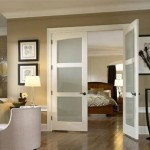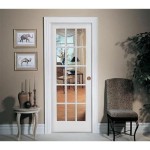What Is Vintage Contemporary Interior Design?
Vintage contemporary interior design, as its name suggests, is a fascinating blend of two seemingly contrasting design styles. It draws inspiration from vintage elements, often from mid-century modern or earlier periods, while incorporating the clean lines, sleek finishes, and minimalist aesthetic of contemporary design. This hybrid style creates a unique ambiance, combining the warmth and character of the past with the functionality and sophistication of the present.
Key Points of Vintage Contemporary Interior Design
1. Vintage Influences: A Time Capsule of Style
Vintage contemporary design embraces the spirit of bygone eras, drawing inspiration from iconic design movements like mid-century modern, Art Deco, or even Victorian styles. This is reflected in the furniture, lighting, and decorative accents. Think plush velvet armchairs from the 1950s, geometric patterned rugs from the 1920s, or antique brass lamps with vintage globes. While these vintage pieces retain their original charm, they are often restored or repurposed to fit seamlessly within a contemporary setting.
The use of vintage pieces adds a layer of history and character to the space. These pieces tell stories of past trends and styles, serving as conversation starters and visual anchors in the room. Their imperfections and patina add a touch of authenticity and warmth that complements the clean lines of contemporary design.
2. Contemporary Features: Functionality Meets Style
While vintage influences shape the character of vintage contemporary design, contemporary features ensure its functionality and sleekness. This manifests in the use of neutral color palettes, natural materials, and minimalist furnishings. Think white walls, light wood floors, and geometric shapes in furniture and decor. The overall aesthetic is one of clean lines, open spaces, and an emphasis on simplicity.
Contemporary design principles prioritize functionality and practicality. Furniture is often modular and multi-purpose, serving both aesthetic and practical needs. Open floor plans and minimal clutter create a sense of spaciousness and ease of movement. Clean lines and neutral colours create a sense of calm and order, making the space feel inviting and serene.
3. The Fusion of Past and Present: A Harmonious Blend
The success of vintage contemporary design hinges on the harmonious fusion of these two styles. The key is to carefully curate vintage pieces that complement the contemporary setting. This often involves selecting vintage pieces with clean lines and simple forms that align with the minimalist aesthetic of contemporary design.
The use of color is another critical element. While vintage pieces might feature bolder colors and patterns, they are typically balanced by the use of neutral tones in the contemporary elements of the space. This creates a balanced visual appeal, preventing the space from feeling too cluttered or overwhelmed. For example, a bold vintage armchair with a patterned upholstery can be balanced by a neutral-colored sofa and a minimalist coffee table.
Vintage contemporary design is not simply about placing vintage pieces in a contemporary setting. It requires a conscious effort to blend these two distinct styles into a coherent and visually appealing whole. This involves careful consideration of the color palette, furniture choices, and overall layout to ensure a seamless integration of the past and present.

5 Ways To Create A Vintage Inspired Interior Hunting For George

Vintage Interior Design Discover Your Ideal Era

Vintage Interior Design For Hdb Homes In Singapore

Vintage From The 1940s And 1950s In Contemporary Interior Design Florim S P A Sb

The Modern Vintage Interior Design Style Decoholic

The Modern Vintage Interior Design Style Decoholic

Vintage Modern What Does It Mean

The Modern Vintage Interior Design Style Decoholic

Vintage Home Decor Timeless Tips For A Modern Twist In Interior Design

How To Mix Modern And Vintage Design Decor Designcafe
Related Posts








